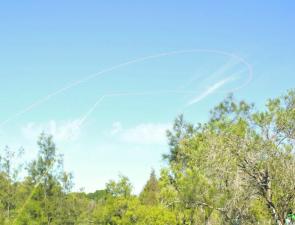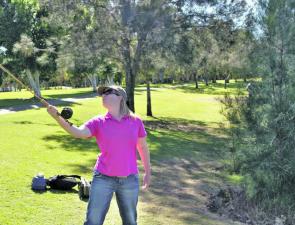Flycasting is different from all other forms of casting and can seem quite daunting to a beginner. However, with a few basic lessons even the novice can produce striking results.
The fundamental difference between flycasting and other forms is that you cast the line and not a lure or bait. This is why the line is so important and is specific to flyfishing. It’s quite thick and specially weighted and tapered.
The fly, which has hardly any weight, is connected to the flyline by a length of nylon called a leader. This is sometimes connected to a section of lighter line called a tippet to which the fly is attached.
The object is to cast the line and have it tow the leader and fly behind it until, when the flyline is fully extended, the leader rolls over and carries the fly to the water.
Whenever casting, take the precaution of wearing glasses.
Before starting stretch your flyline to remove the ‘memory’ of being wrapped on the reel.
In windy conditions select a position where you have the line on the downwind side.
1. The correct grip should be firm without being too tight.
2. At the start of the cast, the line should be out in front with the rod tip close to the water. This is to eliminate slack line.
3. The rod must now be used to lift the line and throw it in the air behind you. Start slow, speed up and make a crisp stop. This will straighten the line.
4. Look behind you to ensure that the line is fully extended and well clear of the ground.
5. The rod should now be thrust forward. Keep the back cast and forward cast in the same alignment.
6. With the rod reaching arm’s length, snap the wrist forward in much the same way of throwing a stone and allow the line to be pulled through the guides.
7. Complete the cast by lowering the rod tip following the line to the water.
These are the basic elements of casting. Practise until you are proficient and then seek professional coaching.
There are many different styles of casting, some designed to gain distance, place a fly under trees or into snags, even around corners. With skill you can get a fly into places you could never get a lure or bait.
Practise on grass with a piece of wool or substitute to simulate a fly. It will also provide you with a visual guide to your performance. – Southeast Queensland Flyfishers
Reads: 1897










